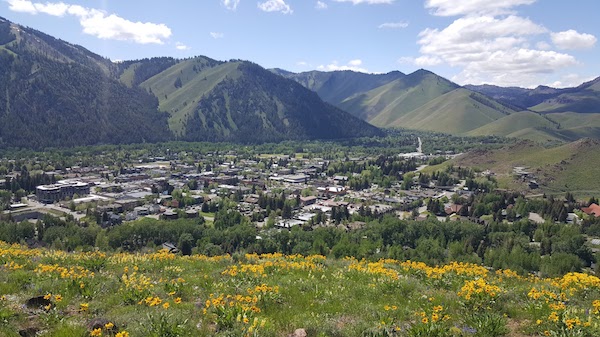BY HARRY WEEKES
What a flower season it was this year. I could hardly believe it. Indian Creek was literally covered with blossoms. If I had to guess, I would say there had to have been a half a million flowers in bloom at once (and I am pretty sure this is a very low estimate). To look out at the hills and see that kind of abundance was pure delight.
While I marveled at this blanket of yellow, I didn’t hear many other people mentioning this profusion of plants. In fact, I heard the opposite. “What a strange year; there really haven’t been any flowers.” “Do you think there won’t be any flowers?” “I think I may have seen a handful, but nothing like years past.”
People weren’t sharing photos of great swathes of lupine. I didn’t hear anything about larkspur, or phlox, or arrowleaf balsamroot. And there were only the faintest murmurings about paintbrush here and there.
“Well,” I said, “what about the bitterbrush?”
“I’m allergic to that.”
If that happens to be the case, this should have been one of the worst allergy springs of your life.
The antelope bitterbrush seemed to have had some kind of cicada-esque blooming event this year, where every single bush burst into flower at the same time. I at once realized how many bitterbrush there were (some slopes appeared to be well over 50% of the dry shrub) and also just how many flowers they produce.
But no one sent me any pictures of these. And I can almost guarantee I am not going to get any Christmas cards with friends and family snuggled up next to the prickly stalks.
Nope, not for bitterbrush.
These commoners of the hills are far too, well, common for us to take much notice of them. Beyond the question of just why that is so, here are a bunch of other questions amassed for me this spring.
Why did all the bitterbrush bloom at once? By most measures, this was a bad flower year for all the other plants—did this bitterbrush blooming have anything to do with that? Most of the people I know with allergies seemed to think this was a less severe year; is that true? What if people aren’t allergic to bitterbrush and sage, but to lupine and phlox and arrowleaf? It didn’t seem like there were ten jillion bees or other pollinators around, so who was this profusion for?
Amongst the interesting tidbits I learned is that bitterbrush is in the rose family—a relationship you can see if you get really close to the many flowers. They can also live for over a century, meaning that we have had a really, really long time to figure out some of these neighbors. And one thing I am now wondering is if I can figure out how to create the purplish dye they say you can make out of their seeds.
As quickly as they came, the flowers went. I marveled at the now dried petals and thickening fruits. Walking around in the aftermath of a recent rain, the air was redolent of sage. I imagine this was also thick with bitterbrush, too. And if the plants were used medicinally in the past, what is the impact of aerosolizing the volatile phytocompounds of that much flower? I wondered if the air could have some palliative effect. I breathed as deeply and slowly as I could, taking in the fog of bitterbrush.
Yep, it was a great flower season.
Harry Weekes is the founder and head of school at The Sage School in Hailey. This is his 52nd year in the Wood River Valley, where he lives with Hilary and one of their three baby adults—Simon. The other members of the flock are Georgia and Penelope (Georgia recently fledged from Davidson College in North Carolina and Penelope is at Middlebury College in Vermont).



